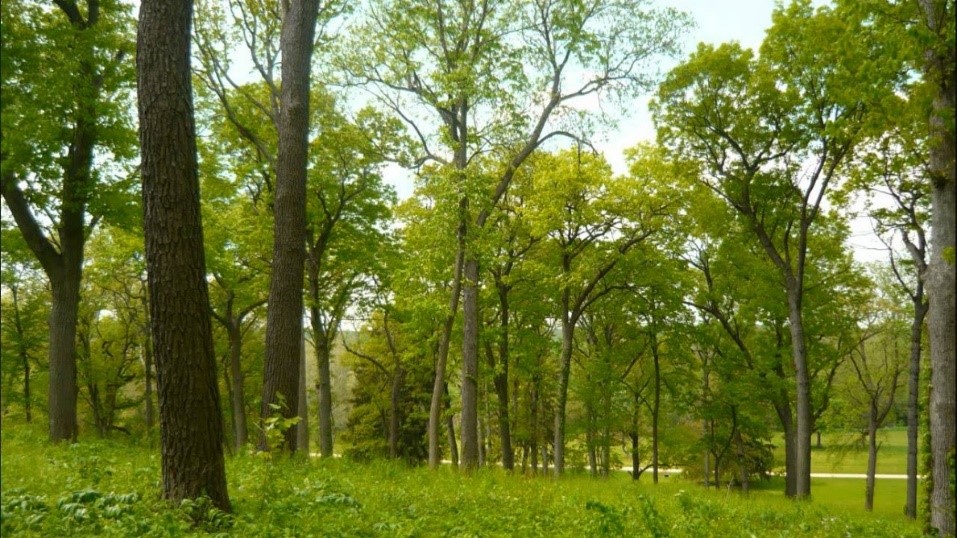An Introduction to the Benefits of Trees at Morton Arboretum

It is projected that by 2050, approximately 70 percent of people in the world will live in cities. As our cities and suburban areas develop and grow, we need to protect and increase the number of trees where people live and work. Not only do trees have many benefits for human health and wellbeing, but they provide habitat and ood for other organisms, and they support natural environmental processes, including fixing carbon during photosynthesis and storing excess carbon as biomass.

To learn how institutions like gardens, museums and zoos can help support these benefits – we interviewed Dr. Jessica Turner-Skoff, who is a tree expert and a science communication leader at Morton Arboretum. Jessica has developed science communication and environmental workshops for all ages, published numerous scientific papers and articles, and created a podcast, “Planted: Finding your Roots in STEM Careers” which showcases plant professionals for students who want to work within the STEM field. Jessica, along with her colleague Dr. Nicole Cavender, wrote a scientific paper about the benefits of trees for communities and cities.
What are some of the benefits of planting trees within cities?
Planting trees can provide wonderful benefits to the ecosystem, including reducing stormwater runoff, decreasing the temperature in cities through shade and evapotranspiration, storing and sequestering carbon, and capturing air pollution through gaseous exchange. Studies have shown that planting trees in cities not only has environmental impacts but is also beneficial to human health; trees are associated with improving symptoms of children who have ADD and ADHD, removing air pollution that in turn reduces instances of glaucoma, death, and heart problems, and even increasing children’s performance in schools.
The Morton Arboretum is conscientious about planting the right tree in the right place and giving it the right care afterwards. The first three years of care after a tree is planted are the most important for watering, mulching, and further maintenance. Cities and suburban areas can create unique environmental challenges that differ from a more natural setting. These factors include receiving too much or too little amounts of water because of impervious surfaces, pollution, compact soils, and restricted soils. The harsh physical environment of cities and suburban centers, coupled with often minimal support for tree care and maintenance, and can cause trees to have a much shorter lifespan than wild counterparts. This is evident as the half-life of an inner-city street tree is 10 to 15 years, which is a stark difference from the potential lifespan of an average tree of decades or centuries. If a planted tree is not cared for correctly, and it dies while it is small, it can actually be a carbon source, rather than a carbon sink.
Do you have any recommendations for organizations who want to plant trees for carbon sequestration and storage but do not have a lot of acreage? Do you have a list of reforestation projects that organizations can support instead of planting and supporting trees?
Not every place is going to be a great place for a large, massive tree. Understanding site conditions, and thinking about future growth, is essential. For example, planting a large oak under powerlines or near other obstructions will be detrimental. The Morton Arboretum created the Northern Illinois Tree Selector to help select trees based on site characteristics such as space, water and growing ability. The selector also provides native and cultivars as a way to support tree diversity. A healthy urban/suburban canopy is a diverse urban/suburban canopy. If an organization wants to plant trees and they do not have a lot of acreage, we recommend connecting with a local botanical garden, arboreta, initiative or local park district. To support planting and protecting trees in the region of Chicago, The Morton Arboretum founded and works with the Chicago Region Trees Initiative (CRTI), which is a coalition of more than 200 organizations working toward a common vision of Chicago as the greenest, most livable, most resilient region in North America. The CRTI team actively builds relationships with communities throughout Chicago, educates people on the importance of trees, supports tree diversity and removal of invasive species, and trains people on how to take care of trees.
If you decide to plant trees, some great resources and partner organizations can be found through ArbNet, ArbNet is a global network for arboreta, and it includes a four-level arboretum accreditation program that recognizes industry standards, connects arboreta, and shares resources and best practices. It is the only accreditation program for tree-focused gardens in the world. The program started 10 years ago and is used by hundreds of municipalities, retirement communities, universities, cemeteries, botanical gardens, parks, resorts and corporate campuses who have been accredited. ArbNet has accredited over 470 arboreta located in 35 different countries. Each organization has to certain requirements including provision of an educational outreach program, a species list, a collections policy and more.






Recent Comments